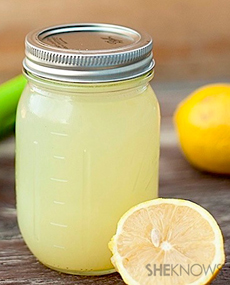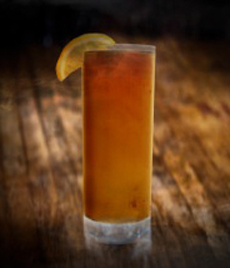RECIPE: Trick Or Treat Scotch Sour
|
WHAT IS LEMON SOUR?
Also called bar mix or sweet and sour mix, lemon sour is lemon-infused simple syrup. Instead of buying a commercial mix made with lemon juice concentrate, you can make it from scratch with fresh lemon juice; it keeps in the fridge for two weeks. Recipe: Lemon Sour Mix Ingredients
1. COMBINE the water, sugar and zest in a saucepan; heat on low, stirring gently until the sugar has dissolved. |
 Homemade sour mix. Photo courtesy SheKnows.com. |
|
|
2. REMOVE from the heat and add the fresh lemon/lime juice. Strain the mixture into a 32-ounce bottle (a clean wine bottle, 750 ml [25 ounces], will do). 3. CHILL for at least an hour before using. Since Prohibition, which began in the U.S. in 1920, “cider” has referred to the unfermented, unpasteurized apple juice, with “hard cider” used to indicate the alcoholic beverage. In the U.K. it is the opposite, with “cider” indicating the alcoholic drink for which special cider apples are used.
WHISKEY VS. WHISKY The use of the e, or not, is an Irish vs. Scots spelling choice. Some scholars claim that the Irish were the true innovators of whiskey and that they introduced it to the Scots; others claim the reverse. Scholars can’t determine why the “e” was dropped by the Scots. One theory is that the Irish made whiskey first and pronounced it with a broad “e.” When the Scots began to make it, they dropped the “e” to differentiate their product. In Ireland and the U.S., the word whiskey is spelled with an “e,” while the British, Scots and Canadians usually opt to drop it. At THE NIBBLE, we prefer adding the “e” for visual elegance. Here’s more on the history of whiskey.
|
||



